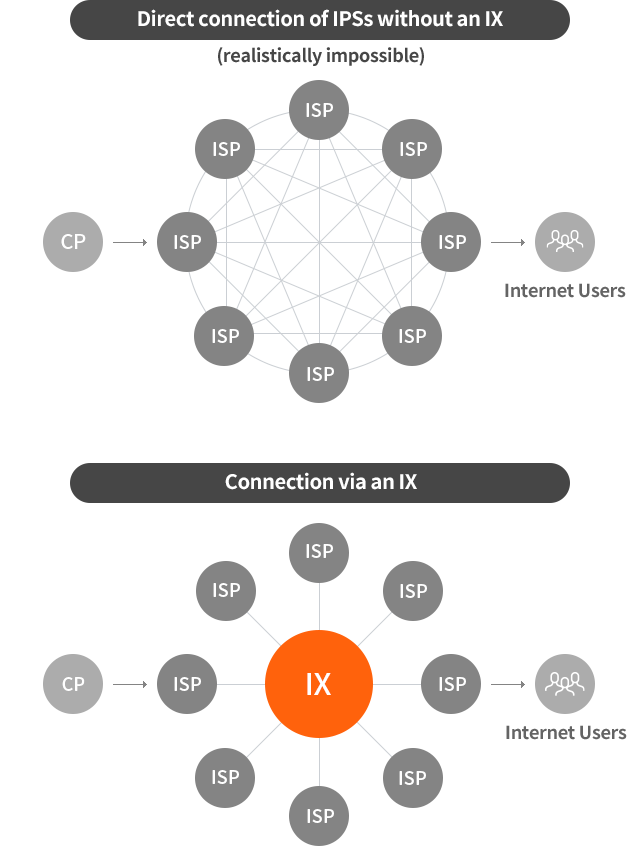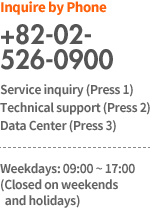When the Internet was first introduced in Korea, Internet users had to first connect to an overseas
Internet exchange (IX) provider, as Korea was without an IX. This meant that the domestic Internet
traffic had to be sent across the ocean and back, which resulted in poor network quality and high cost.
This problem became severer, as the number of Internet user grew. Ultimately, in 1995, Korea’s first
IX was created by the Korea Computerization Agency (present-day National Information Society Agency).
However, the agency was unable to continue operating the IX and had to transfer the operations to a
private enterprise. Accordingly, KT and LG U+ began operating KTIX and DIX, respectively.
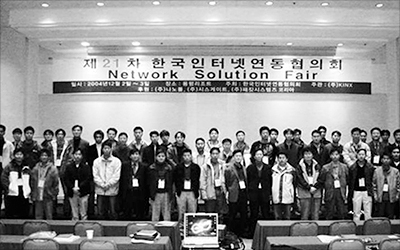
However, general ISPs faced difficulties using the IX and as a result, sixteen ISPs jointly established
the Korea Internet Neutral eXchange (KINX). This marked the beginning of KINX, which was established
in June 1999 for a neutral IX.
As of 2019, there are four companies providing IX backbone networks for the government’s Integrated
Data Center (IDC), and they are KT, SK Broadband, LG U+ and KINX. KINX is an IX-based network service
provider officially approved by the government and is the sole L2-based neutral IX operator in Korea.
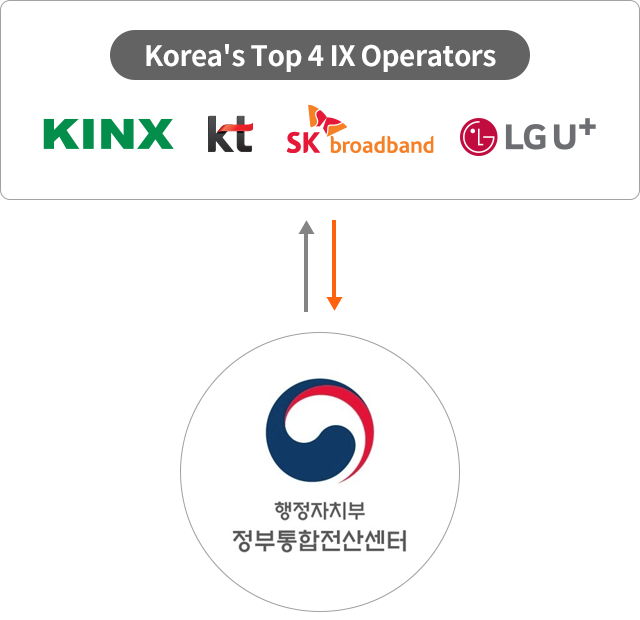
An IX, which is the exchange point for the Internet traffic among the ISPs, is where all the traffic
information gets collected. If the traffic flow is determined and controlled by a specific entity,
then all other entities participating in the IX will be placed in a relatively disadvantageous position.
This is why the participating entities in the IX are allowed to decide on an interconnection policy
on their own, and this is referred to as a neutral IX. IXs in Europe generally operate according to
this type of policy.
There are largely two things that you need to check when it comes to a neutral IX.
First, check whether it is possible to freely choose the ISP. A neutral IX service provider
should not force the participating companies to subscribe to a predesignated ISP and must
instead provide an environment in which they can freely choose. This is because participating
companies tend to choose an ISP based on cost as well as their service policy.
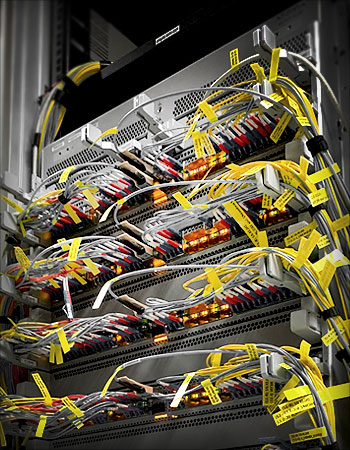
Another factor to consider is whether the participating companies can freely exchange routing information.
This means that it is the participating companies that determine where to send the traffic.
This is why equipment for a neutral IX typically uses the L2 switch, which simply performs traffic exchange,
and thus the IX service provider cannot control the routing information of the participating companies.
Even if the L3 type is used, the neutral IX service provider should not restrict the input/output routing
information of participating companies.
KINX provides L2 switch-based IX and is the sole neutral IX operator in Korea.
KINX, founded in 1999, has been interconnecting domestic Internet Service Providers (ISPs)
as well as local cable television system operators (SOs) and Content Providers (CPs)
via the IX to facilitate the flow of Internet traffic.
Not only that, it has been expanding its IX interconnection with overseas network operators
as a way to improve the quality of overseas transmission of domestic content and inflow of overseas content
into Korea.
KINX has interconnected some 60 members via a peering network with a capacity of more than 1TB,
with global companies making up around 50% of the members.
By connecting more than 1.7TB of traffic to and
from Hong Kong, Indonesia, Vietnam, Malaysia and other countries, KINX has emerged as the IX center of Asia.
| 160Global PoP Network(Gbps) | 83Connected AS |
| 261Ports | 543Traffic Peak(Gbps) |
| 3,554Capacity(Gb) | 38,455Prefixes |
In each continent and country, companies that use IXs get together to discuss various issues concerning the promotion of interconnection and peering. In Korea, this is facilitated through the KINX Peering Forum (KPF).
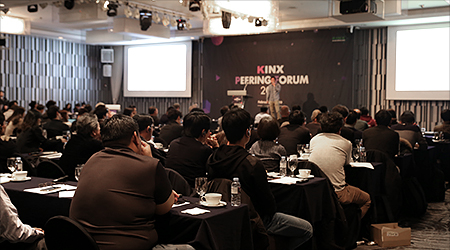
KPF, which was launched by the Korea Internet Neutral eXchange (KINX) in 1999, is the one and only IX peering event
that brings together domestic and foreign network experts from overseas IX operators, corporate members of KINX and
the Internet service industry.
This provides a chance to check out the latest technological trends and the current of
the global peering market without having to attend an overseas conference, and to engage in in-depth discussions with
global business operators wishing to learn about the peering policy in Korea.
For more information, clink the link below.
IX, which is short for “Internet eXchange” is a means of interconnection that facilitates communication among ISPs and NSPs. In order for Internet users to exchange information, they must connect to the ISPs that they respectively use and an IX is used by ISPs to set efficient network paths and cut costs.
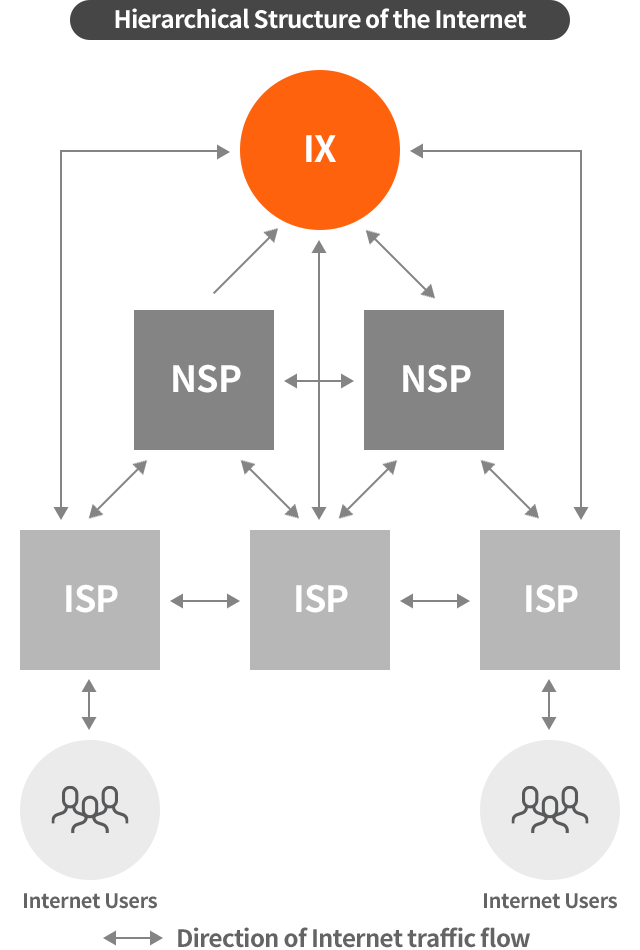
Content providers (CPs) that provide Internet content receive Internet circuits from ISPs.
In order for an Internet user to access the content provided by a CP, the ISPs to which the user
and the CP are subscribed must be connected to each other.
Ultimately, all the ISPs must be connected to one another to allow seamless use of the Internet. This is, however, realistically impossible.
This is why there needs to be something that facilitates connection among the ISPs, and this is IX.
